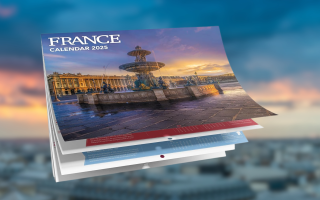Vignette: Samatan market
Author Amanda Hodgkinson shops for chickens in a village near her Gascony home
“You want to buy pullovers?” René, our neighbouring farmer, 84 years old, stands in my courtyard in blue overalls and the tartan slippers that he wears all the time now. He holds out a basket of farm eggs.
A chicken is a poule; a pullover is a pull. I live in the Gers in the heart of Gascony, where the local accent is as thick and rich as a good cassoulet. My British accent is confusing him. “No, no,” I say. “Les poules.” I flap my arms, funky-chicken style. “For eggs.”
Is there a disappointed look in his eyes? René has been bringing me eggs ever since we moved here and in return I give him coffee, a slice of cake and as much time as he wants to chat.
“Samatan,” he says, reluctantly. “That’s the best place to go.”
Samatan market on a Monday morning is one of the most authentic markets in France. Around 50 kilometres west of the city of Toulouse, Samatan has its roots deep in rural life. Since medieval times, its market has been an important trading place and social hub for the region. Here you can buy chickens and, no doubt, plenty of pullovers; also locally grown fruit and vegetables through the seasons, fashion clothes and farm clothes, shoes, jewellery, garden tools, plants, flowers, cheeses, meats, charcuterie, music, mattresses, livestock, honey, wines, armagnac, and – not for the faint-hearted – freshly slaughtered ducks, geese and their livers.
I arrive early and walk into bustling crowds. In the late 19th century this market would have had teeth-pullers and showmen, charlatans, magicians and gamblers. You could meet the mole catcher or the snake finder and see the men who earned a living calling out the hours. At midnight they would dutifully inform the dead in the cemetery of the lateness of the day. Today, Samatan market still maintains that kind of rough-edged magic, even if you to sit at a café, people-watching all morning.
René says I must buy Gascon Noir hens. This is no fancy fowl, but a decent egg-layer and good for the pot. I go into the livestock building, which is heaving with people looking at cages of songbirds, puppies, kittens, rabbits, ferrets, black pigs, goats, pigeons, geese, ducks and every colour and breed of chicken you could imagine.
I buy four Gascons Noirs – plump black hens with golden feathers around the throat. And then I see a strange-looking black bantam hen. All alone, perched on a cage of ducks, she has frizzy feathers with a few snow-white ones sticking up on her head. She might be an ugly duckling, but it’s love at first sight. A coup de foudre . I buy her for €20.
We christen her Iris. René is horrified: €20? Tourist prices. What possible use is she? Too small to eat and no good for eggs. Poor Iris. She fluffs her crinkled feathers and retreats into the hen house.
All my Samatan market hens lay well, but Iris is the best. Each day she lays a perfect egg, white as a sugared almond. I ask René to advise me on keeping hens and he takes his role very seriously. All summer, we take our coffee by the henhouse, sitting on deck chairs watching Iris. René has never seen such a funny-looking hen. Even when he is sad about getting old, watching Iris cheers him up. A bit of Samatan market magic no less.
Former FRANCE Magazine columnist Amanda Hodgkinson is author of the New York Times best-seller 22 Britannia Road, and its sequel, Spilt Milk, which is out now. For more information, visit www.amandahodgkinson.com
Share to: Facebook Twitter LinkedIn Email


